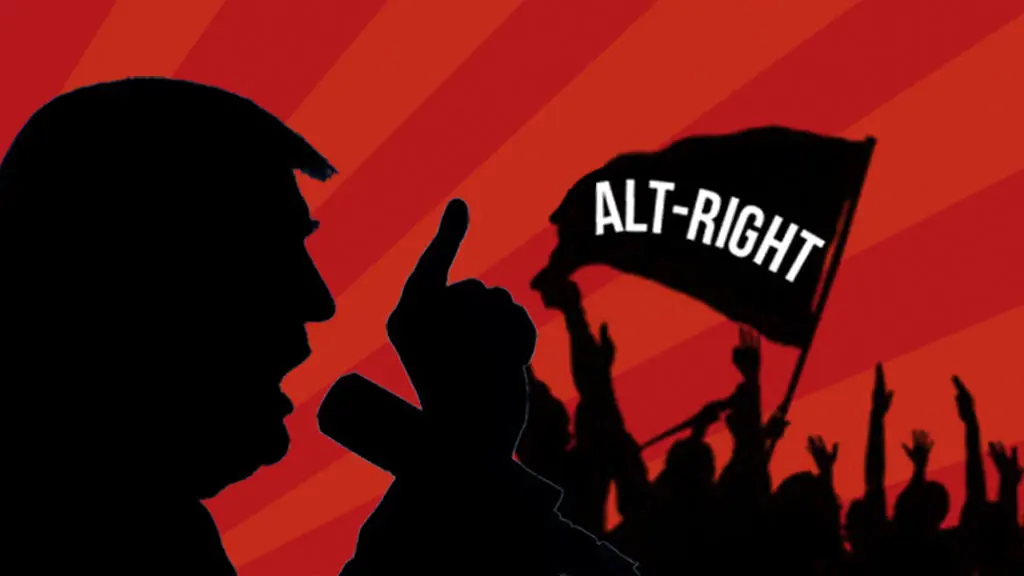Remaking the right

For decades, America’s political debate took place in town halls, churches and workplaces across the country. But the battlefield in the modern political era has shifted online, onto social media, chat forums — and darker corners of the internet. Anthony Kelly, a PhD candidate in the Department of Media and Communications, discusses how online behaviour among America’s right wing helps us understand its society and politics.
Anthony was motivated to research the American right wing following the 2009 emergence of the Tea Party, an anti-government movement that rose to prominence through its outward opposition to corporate bailouts, taxation and government spending during the Great Recession.
Anthony says: "My research started out by focusing on how Tea Party supporters integrated media messages into their everyday political talk. I realised that it wasn’t enough for me to look at the ways in which people were talking about media content, as there was something more active going on."
While conservative talk radio and cable news have been a dominant force in the US since at least the 1990s, the expansion of social media in the past decade has transformed the nature of political engagement amongst American conservatives. The media’s structural changes, with the proliferation of internet news outlets alongside the growth of social media, Anthony argues, have shone a light on and exacerbated the divisions within the fragmented and highly combustible American right. They have also expanded the possibilities for audiences to participate in public talk about politics online.
Anthony says: "Media critic Jay Rosen observed that ’the people formerly known as the audience‘ now have their own stake in media agendas. These new forms of participation enabled by digital media are broadening people’s ability to contribute to and shape the political moment."
It is unhelpful, Anthony argues, to view America’s right as a single bloc, which feeds into the binary reduction of American political identities to liberals versus conservatives. What he has witnessed is a nebulous collection of right-wing and far-right groups that have grown in power in recent decades, despite deep internal differences. "There are many variants of conservatism that are more or less removed from a constantly shifting ideal that gets continually redefined in right-wing partisan media. But there is no single, dominant strain of right-wing politics that unifies these groups", he says.
The contemporary conservative fragmentation has many roots in the emergence of the ‘New Right’, a coalition of social conservatives and economic liberals that came to prominence in the 1970s and was instrumental in Ronald Reagan’s victory in the 1980 presidential election.
The key difference in the modern era is that divisions and disagreements are played out in the public arena of the internet, where adherents to the numerous different brands of conservatism are usually able to find a political home. "American conservatism has always been composed of factions, but the fragmentation that underlies the current coalition is both revealed and catalysed by today’s partisan media" says Anthony.
The stakes of Anthony’s research topic were raised when Donald Trump unexpectedly won the American presidential election in 2016, propelled by his disparate crowd of right-wing supporters and lifting nationalist propaganda from the recesses of the internet into the spotlight.
One of Donald Trump’s favoured news sites is Breitbart.com (analysis of Trump’s tweets shows he has promoted the site’s stories more often than any other news outlet on his Twitter feed). The media company, declared by former CEO and current White House chief strategist Steve Bannon as the "platform for the alt-right", promotes its specific brand of ethnic nationalism to a relatively small but active audience, publishing recent articles with headlines such as "Hoist it high and proud: the Confederate flag proclaims a glorious heritage" and "The West vs Islam is the New Cold War—Here’s how we win".
Despite the US President’s support, Anthony feels the rise to prominence of these sites in media coverage shouldn’t be overstated: "These sites still have much smaller audiences than large global news organisations like the Guardian and the New York Times or right-wing outlets that currently dominate the US market like Fox News. Although it is crucial that we scrutinise the current crop of alt-right figures and sources, including their anti-media rhetoric, we must also maintain a sense of their status within a broader right-wing media ecosystem."
Meanwhile, alt-right websites such as Breitbart may yet return to the fringes of public life. Partisan media operate by capturing the attention of niche audiences through ideologically skewed content, which means they have the capacity to alienate more consumers than they attract.
Anthony says: "Breitbart is a media business at a time when many news organisations are struggling to be profitable. Advertising boycotts are already a common tactic for targeting right-wing media that are seen to go too far, and Breitbart is equally susceptible to major revenue sources walking away because of public reactions to their rhetoric. This is something that we can already see in action.
"Breitbart and the alt-right did play a major role in the colonisation of mainstream American conservatism by what up until recently had been considered fringe ideologies. Understanding the interplay between the fringes and the mainstream will improve our understanding of just how dominant the alt-right’s brand of nationalism might become."